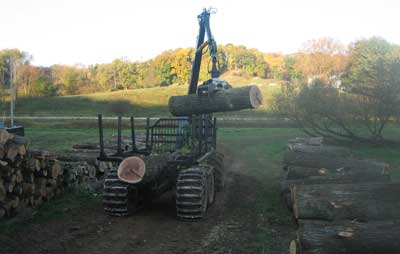
Managing Trees is Managing an Investment
“Financial viability of our property, the cropland and woodland alike, is important to my siblings and me,” says Doug Duren, a Richland County landowner. His 400-acre farm has been in the family for many generations, so short- and long-term thinking is expected.
“Woodlands don’t provide the annual income like our agricultural fields, so we needed help calculating future timber income,” Doug says. They hired a forester with a financial planning background who helped them take field measurements (timber species and volume) and project income 25 years out.

Doug believes it made all the difference. “It was a very important planning tool for us to weigh the cost of management now against future income. We’re making decisions about 100 years of tree growth and management by previous generations; we wanted to be careful about the forest and financial management.”
Over the years, state and federal programs such as the Wisconsin Forest Landowner Grant Program (WFLGP), Managed Forest Law practices, and the Natural Resource Conservation Service’s (NRCS) Environmental Quality Incentive Program (EQIP), have helped the family pay for pre- and post-harvest management and made its commitment to sustainable forestry more financially viable.
Most recently, the Durens harvested some of the trees from their “financial portfolio.” For Doug and his siblings, planning is paying off.
